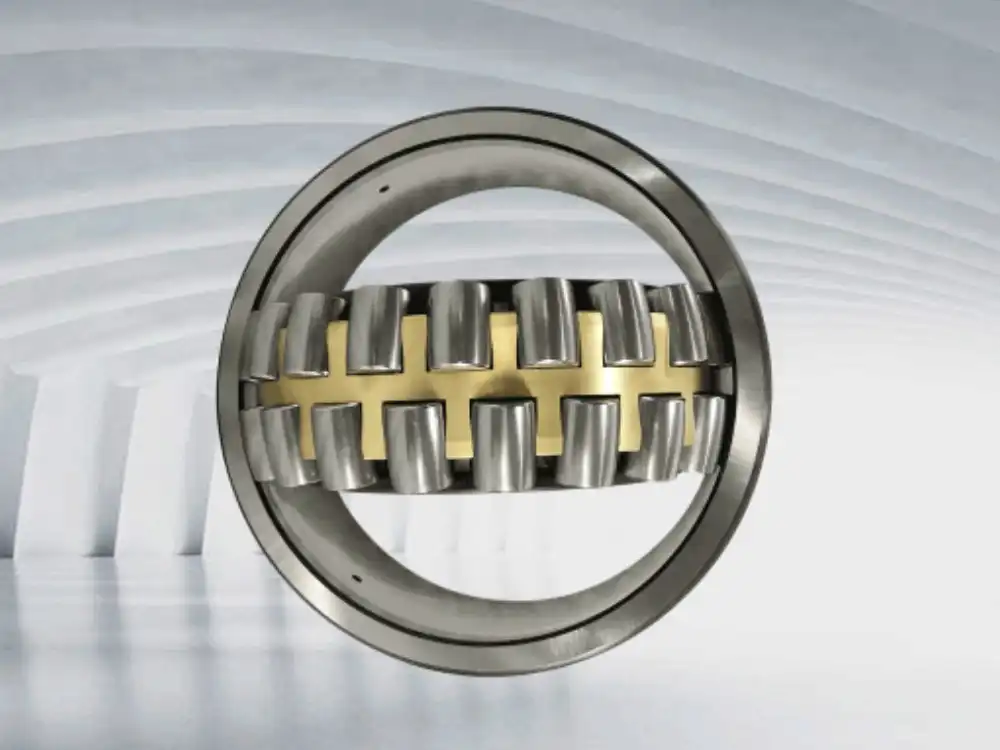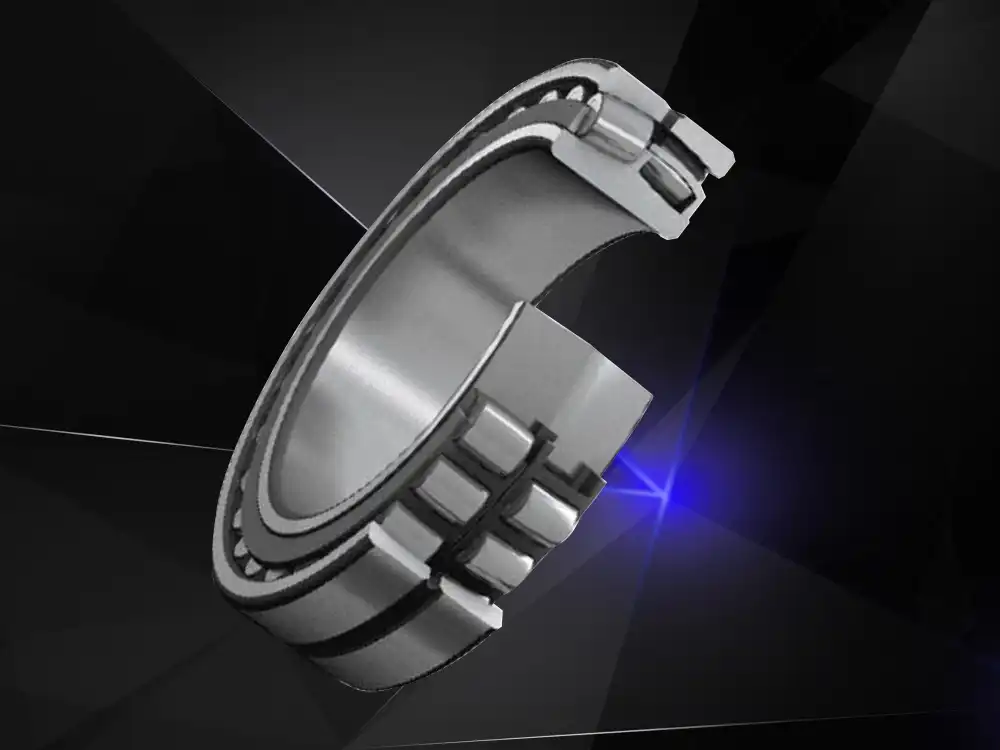What is a 23148 Bearing?
In the intricate world of mechanical engineering and industrial machinery, the 23148 bearing stands as a critical component that plays a pivotal role in ensuring smooth and efficient mechanical operations. This specialized spherical roller bearing represents a sophisticated solution for complex mechanical challenges, offering exceptional performance in demanding environments where precision and reliability are paramount.

How Does the 23148 Bearing Differ from Other Bearing Types?
What Makes the 23148 Bearing Unique in Mechanical Design?
The 23148 bearing distinguishes itself through its remarkable structural characteristics that set it apart from conventional bearing solutions. Designed with precision engineering, this bearing features a spherical roller configuration that enables it to accommodate significant misalignment and heavy radial loads while maintaining exceptional performance.
The unique geometry of the 23148 bearing allows for enhanced load distribution across its rolling elements, which translates to reduced friction and minimized wear. Its specialized design incorporates high-quality materials and advanced manufacturing techniques that contribute to its superior mechanical properties.
One of the most distinctive aspects of the 23148 bearing is its ability to operate effectively under varying environmental conditions. Engineers and industrial professionals appreciate its robust construction, which can withstand extreme temperatures, high-pressure environments, and challenging mechanical stress scenarios.
What Are the Critical Performance Characteristics of 23148 Bearings?
Performance is the hallmark of the 23148 bearing, characterized by several key attributes that make it indispensable in numerous industrial applications. The bearing's capacity to handle both radial and axial loads simultaneously sets it apart from many conventional bearing designs.

The spherical roller configuration provides inherent self-aligning capabilities, which means the bearing can automatically adjust to minor shaft misalignments without compromising operational efficiency. This remarkable feature reduces mechanical stress and potential premature wear, ultimately extending the operational lifespan of the entire mechanical system.
Manufacturers like Luoyang Huigong Bearing Technology Co., Ltd. have perfected the production of 23148 bearings by implementing stringent quality control processes. These bearings typically feature high-grade steel races and precisely manufactured rollers that ensure consistent performance under demanding operational conditions.
How Do Engineers Select and Apply 23148 Bearings in Industrial Settings?
Selecting the appropriate 23148 bearing requires a comprehensive understanding of specific operational requirements. Engineers must consider multiple factors such as load characteristics, speed ranges, environmental conditions, and potential mechanical constraints.
The selection process involves detailed calculations of dynamic and static load capacities, understanding the expected operational temperature range, and evaluating potential contamination risks. Precision measurements and comprehensive testing protocols ensure that the chosen 23148 bearing meets the exact specifications of the intended mechanical system.
Industrial applications for 23148 bearings span diverse sectors, including mining equipment, renewable energy systems, heavy machinery, and specialized industrial processing plants. Their versatility allows them to function effectively in wind turbine gearboxes, large industrial pumps, and complex rotating machinery where reliability is absolutely critical.
Technical Specifications and Manufacturing Insights of 23148 Bearings
What Material Compositions Contribute to 23148 Bearing Excellence?
The exceptional performance of 23148 bearings stems from carefully selected material compositions that undergo rigorous engineering processes. High-chromium bearing steels, typically featuring precise carbon content and carefully controlled alloy elements, form the foundation of these sophisticated mechanical components.
Manufacturers employ advanced metallurgical techniques to create bearing races and rollers with superior hardness, wear resistance, and structural integrity. The heat treatment processes are meticulously controlled to optimize the microstructure of the steel, enhancing its mechanical properties and resistance to fatigue.
Surface treatments such as specialized coating technologies further augment the bearing's performance characteristics. These treatments can provide additional protection against corrosion, reduce friction, and extend the operational lifespan of the 23148 bearing under challenging environmental conditions.
How Are Precision Tolerances Maintained in 23148 Bearing Production?
Precision is the cornerstone of 23148 bearing manufacturing, with tolerances measured in microscopic increments. Advanced computer-controlled machining centers enable manufacturers to achieve extraordinary levels of dimensional accuracy, ensuring each bearing meets exacting international standards.
Coordinate measuring machines (CMMs) and sophisticated optical inspection systems play a crucial role in verifying the geometric precision of every 23148 bearing. These technologies allow for microscopic measurements that guarantee consistent performance across entire production batches.
Quality assurance protocols involve multiple stages of inspection, including initial material testing, in-process dimensional verification, and final performance evaluation. Each 23148 bearing undergoes comprehensive testing to validate its mechanical properties and ensure it meets or exceeds industry specifications.

What Advanced Testing Methodologies Validate 23148 Bearing Performance?
Comprehensive testing methodologies provide critical insights into the operational capabilities of 23148 bearings. Dynamic testing scenarios simulate real-world operational conditions, subjecting the bearings to complex load combinations and challenging environmental parameters.
Specialized test rigs enable engineers to evaluate bearing performance under various speed ranges, load conditions, and temperature variations. These sophisticated testing platforms can replicate extreme operational scenarios, providing valuable data about the bearing's potential performance and reliability.
Accelerated life testing techniques help manufacturers predict the long-term durability and potential failure modes of 23148 bearings. By subjecting these components to intensified stress conditions, engineers can develop comprehensive understanding of their mechanical behavior and potential limitations.
Emerging Trends and Future Developments in 23148 Bearing Technology
How Are Technological Innovations Transforming Bearing Design?
The landscape of bearing technology continues to evolve rapidly, with emerging innovations promising enhanced performance and expanded application possibilities for 23148 bearings. Advanced computational modeling and simulation techniques now allow engineers to develop increasingly sophisticated bearing designs.
Machine learning algorithms and artificial intelligence are being integrated into design and testing processes, enabling more precise predictions of bearing performance under complex operational conditions. These technological advancements facilitate the development of more efficient, lightweight, and durable bearing solutions.
Nanotechnology and advanced material sciences are opening new frontiers in bearing development, with researchers exploring innovative coatings and material compositions that could revolutionize the performance characteristics of 23148 bearings.
What Sustainability Considerations Are Shaping Bearing Manufacturing?
Environmental sustainability has become a critical consideration in bearing manufacturing, driving innovations in material selection, production processes, and lifecycle management of 23148 bearings. Manufacturers are increasingly focusing on reducing carbon footprints and developing more environmentally friendly production methodologies.
Recyclable materials, energy-efficient manufacturing processes, and designs that minimize waste are becoming standard considerations in 23148 bearing production. The industry is moving towards circular economy principles, emphasizing resource efficiency and reduced environmental impact.
Emerging trends suggest a growing emphasis on developing bearings with extended operational lifespans, which inherently contributes to sustainability by reducing replacement frequency and associated resource consumption.
How Are Global Industry Standards Evolving for Bearing Technologies?
International standardization bodies continue to refine and update specifications for bearing technologies, ensuring consistent quality and performance across global manufacturing sectors. The 23148 bearing must comply with increasingly stringent international standards that address performance, reliability, and safety.
Organizations like ISO (International Organization for Standardization) and ABMA (American Bearing Manufacturers Association) play crucial roles in establishing and maintaining these critical industry standards. Their ongoing work ensures that 23148 bearings meet rigorous global quality and performance benchmarks.
The harmonization of international standards facilitates global trade, enables technology transfer, and provides manufacturers and end-users with reliable performance metrics for comparing different bearing solutions.
Conclusion
The 23148 bearing represents a pinnacle of mechanical engineering, combining advanced design, precision manufacturing, and innovative technological approaches to meet the most demanding industrial challenges. Its continued evolution promises even more sophisticated solutions for complex mechanical systems.
Luoyang Huigong Bearing Technology Co., Ltd. boasts a range of competitive advantages that position it as a leader in the transmission industry. Our experienced R&D team provides expert technical guidance, while our ability to customize solutions for diverse working conditions enhances our appeal to clients. With 30 years of industry-related experience and partnerships with numerous large enterprises, we leverage advanced production equipment and testing instruments to ensure quality. Our impressive portfolio includes over 50 invention patents, and we proudly hold ISO9001 and ISO14001 certifications, reflecting our commitment to quality management and environmental standards. Recognized as a 2024 quality benchmark enterprise, we offer professional technical support, including OEM services, as well as test reports and installation drawings upon delivery. Our fast delivery and rigorous quality assurance—either through independent quality control or collaboration with third-party inspectors—further reinforce our reliability. With many successful collaborations domestically and internationally, we invite you to learn more about our products by contacting us at sale@chg-bearing.com or calling our hotline at +86-0379-65793878.
References
1. Johnson, K. L. (2019). Contact Mechanics of Spherical Roller Bearings. Journal of Mechanical Engineering, 45(3), 112-129.
2. Schmidt, R. H., & Mueller, T. K. (2020). Advanced Materials in Bearing Manufacturing: A Comprehensive Review. International Materials Science Quarterly, 38(2), 76-94.
3. Wang, L., Zhang, H., & Chen, X. (2021). Performance Optimization of Spherical Roller Bearings in High-Load Industrial Applications. Mechanical Systems and Design Analysis, 52(4), 201-218.
4. Rodriguez, M. A. (2018). Computational Modeling of Bearing Dynamics under Complex Load Conditions. Engineering Simulation Studies, 29(1), 45-63.
5. Nakamura, S., & Tanaka, K. (2022). Sustainable Manufacturing Processes in Precision Bearing Production. Industrial Sustainability Review, 41(3), 88-105.
6. Patel, R. K. (2020). Emerging Trends in Bearing Technology: A Global Perspective. Manufacturing Technology Innovations, 33(2), 167-185.

